The pomegranate tree has been known to mankind since ancient times, when the Romans brought the fruits of the plant from Carthage. Pomegranate is loved for its beautiful decorative appearance and for fruits that contain many vitamins and minerals, and in addition have a pleasant sweet and sour taste.
Many gardeners are thinking about whether it is possible to grow such a tree at home. It will not only decorate the interior, but also begin to bear fruit. However, along the way, many questions arise: is it possible to grow a full-fledged plant from seeds, how to care for heat-loving pomegranate, so that it grows well and does not suffer from diseases and pests.
It should be noted that growing and caring for an exotic plant is much simpler than it might seem at first glance. About all this in the article below.
Material Content:
Pomegranate tree: botanical description and places of distribution
Pomegranate belongs to the genus of medium-sized trees and shrubs that are part of the Derbennikovye family. They are a shrub or tree up to 6 meters high, with small dark green glossy leaves. The branches of the plant are spiky and thin. During flowering from May to June, small, up to 2.5 cm, funnel-shaped flowers painted in red-orange appear on the tree.
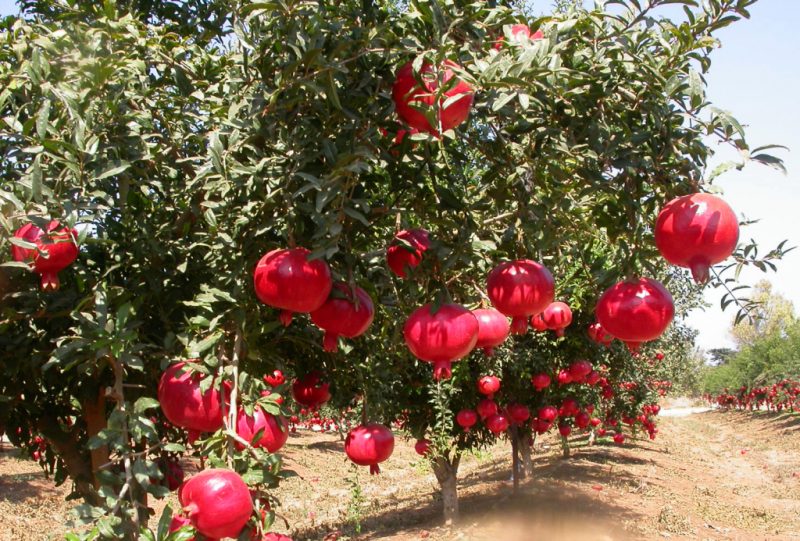
After pollination and the appearance of the ovary, the plant begins to bear fruit, called grenades. Fruits can reach 18 cm in diameter, have a dense leathery shell. Numerous seeds are hidden inside the fruit, which are surrounded by red-orange transparent pulp and are separated from each other by small membranes.
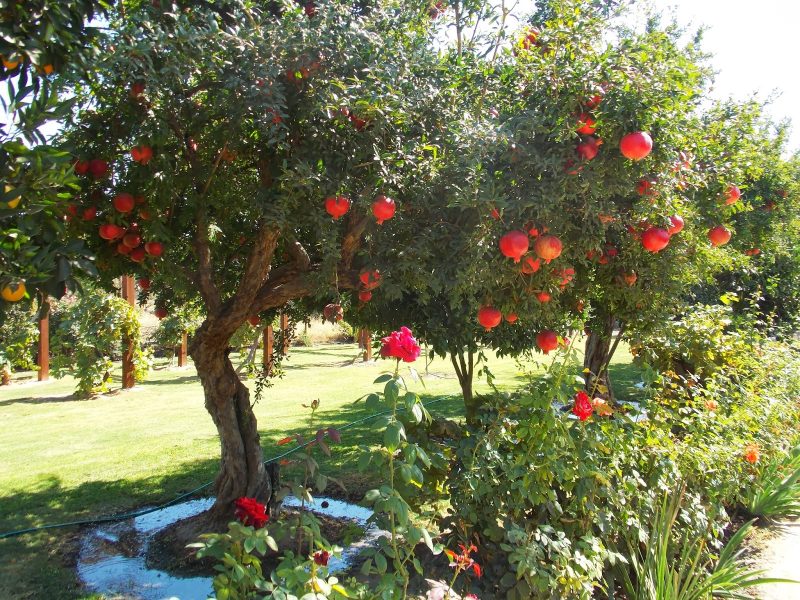
Dwarf specimens grown in apartments and premises, completely repeat the appearance of ordinary pomegranate trees. The only difference is the height, in home specimens it reaches 60 cm in height.
The main places of growth are southeast Asia and southern Europe. The plant grows in tropical and subtropical climates, needs heat and humidity.
The main nuances of growing from the pomegranate seed stone
The easiest and fastest way to get your own pomegranate tree is to grow it from the seed.
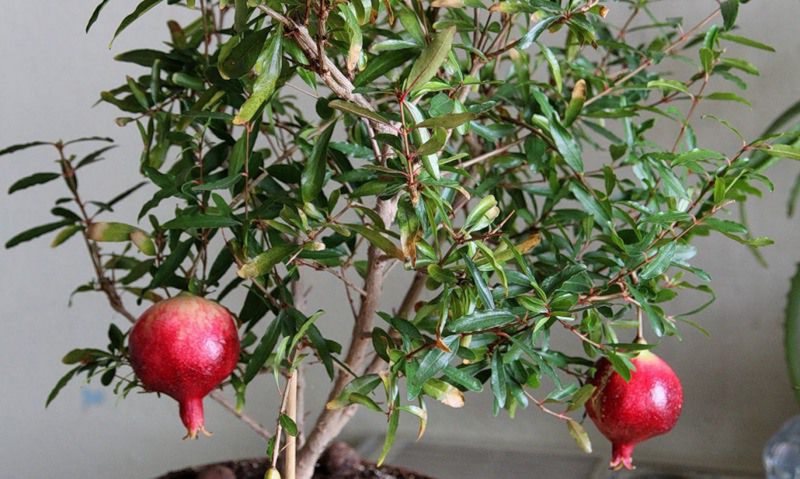
To do this, do the following:
- At a store or market, buy a fruit that will not show signs of damage or mold. The fruit should not be stained, the peel should look smooth and nourished, without signs of dryness or wilting.
- Pomegranate is broken and no more than 10 grains are selected for planting. Since the plant has good germination, in some cases, you can do 3 or 4 grains.
- After this, the planting material should be cleaned of pulp under running water. The quality of the seeds themselves is important. Soft and greenish specimens are not suitable for planting in the pot, since they will not work to grow a beautiful and healthy tree.
- After the final selection, the healthiest seeds are soaked in water for a period not exceeding 12 hours. “Epin” is added to the water, a few drops will be needed on a glass of water.
- While the seeds are being processed, you should prepare the land for planting. The best solution is to buy universal soil in a flower shop. They fill the pot, then plant the seeds to a depth of not more than 1.5 cm and sprinkle them with a layer of earth. After that, the soil is sprayed, and the surface of the pot is covered with cling film or polyethylene and put in a warm place to create a greenhouse effect.
After carrying out all the above manipulations, the first shoots can be seen in a couple of weeks, and in a year the first flowers will appear.
After this, the soil must be moistened periodically to prevent drying out. This is best done with a spray gun. As soon as young sprouts acquire several leaves, they are planted in separate pots. Tanks should be shallow, with good drainage.
To subsequently see how a pomegranate tree blooms, it is necessary to constantly maintain the soil in young plants in a wet state. At the same time, the water collected in a pan or saucer should be poured regularly. Drying and lack of light threatens that the plants will stretch upward, but will not bear fruit. This is especially dangerous for seedlings grown in the autumn-winter period.
Home Care
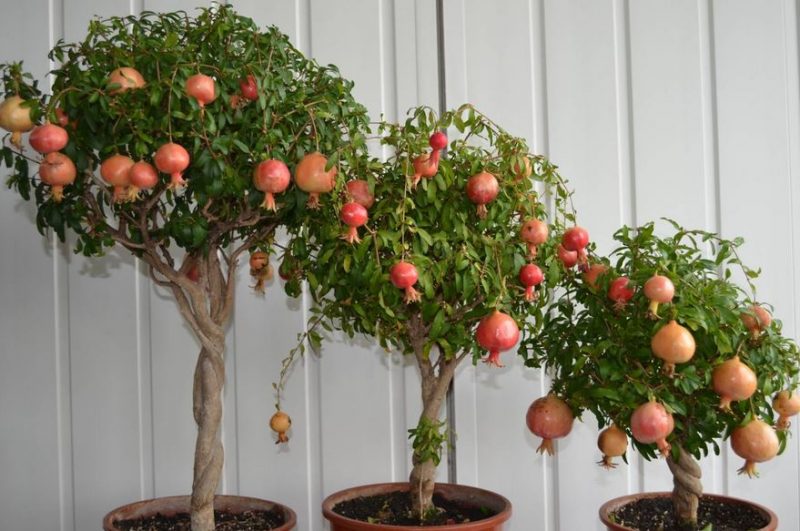
Florists who grow a pomegranate tree must adhere to the following rules:
- In the warm season, the plant should provide a temperature regime in the range of 18 - 25 degrees. With the onset of cold weather, the temperature is lowered to 12 degrees so that the bush hibernates, and the next year gives more young shoots and fruits.
- It is extremely important not to allow the earth to dry out in a pot and to regularly water the plant, especially in the warm season. The peculiarity of pomegranate is that the root system does not go deep, but is located below the surface of the earth. In winter, watering is significantly reduced so that it is easier for the plant to tolerate wintering.
- To achieve abundant fruiting for decorative purposes, from spring to autumn, pomegranates need to be fed with universal fertilizers once every 2 weeks. However, it should be remembered that such fruits will not be suitable for food due to the high content of nitrates in them.
- With the onset of autumn, the plant begins to get rid of foliage, which sometimes scares inexperienced gardeners. Do not rearrange the pomegranate to heat, as this will weaken the plant, and fruiting in the new year will be weak and small.
- In February, when the first buds appear on the bush, the tree should be moved to a warmer and more lighted place.At the same time, pruning of dried, unhealthy and too long shoots is carried out for better growth. At this time, you can form the desired shape of the crown, or try your hand at the art of creating pomegranate bonsai.
- To grow pomegranate better, you should transplant it into a new pot every year, which will be a couple of centimeters more than the previous one. When the plant reaches the age of three, the transplant is stopped. They can be carried out only when the roots are cramped in the container. It is important to consider that pomegranate loves narrow pots and feels great about them.
If you adhere to the above recommendations, you can not only get a beautiful plant, but also prevent the development of some diseases that may occur due to improper care.
Pest and Disease Control
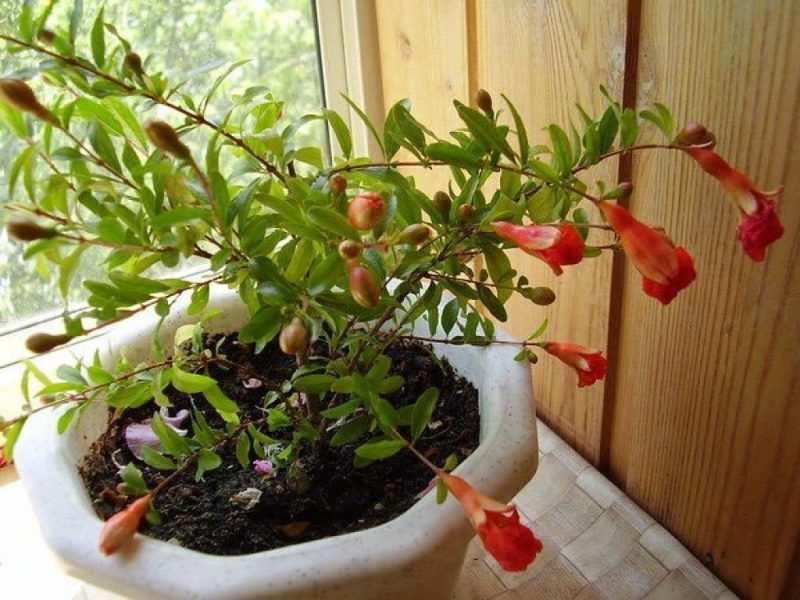
Homemade pomegranate can be the victim of the following diseases:
- Cancer of the branches. On the shoots you can see wounds around which porous swellings are noticeable. First, branches are damaged, then the disease spreads throughout the plant. The cause may be the time of not seen damaged or frostbitten parts of the bush. The treatment in this case will be radical - all diseased parts need to be cut.
- Gray rot can be identified by its characteristic moldy coating. You can get rid of it by spraying the bush with special chemicals.
- Aphids and stalks. In the room appear extremely rarely. If they are found, the plant should be immediately sprayed with insecticides.
- Spider mite. On the pomegranate you can see the appearance of a characteristic cobweb, the foliage begins to fall. Some gardeners advise not to spray the plant with chemicals, but try to cure with decoctions of garlic or onions. It is important to note that such treatment does not always give the desired result, but it is easy to start the situation and the grenade will die. Therefore, when the first traces of the pest are detected, the bush must be sprayed with special chemicals.
A flowering pomegranate tree will be a wonderful decoration for a house or apartment. It is only important to take care of the thermophilic plant correctly, and then it will delight all year round with its beautiful and healthy appearance.












